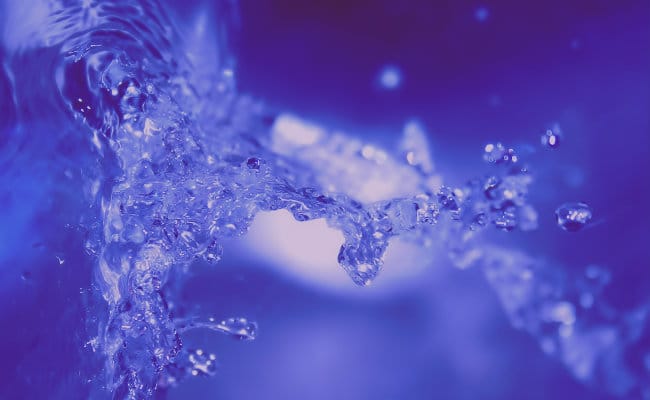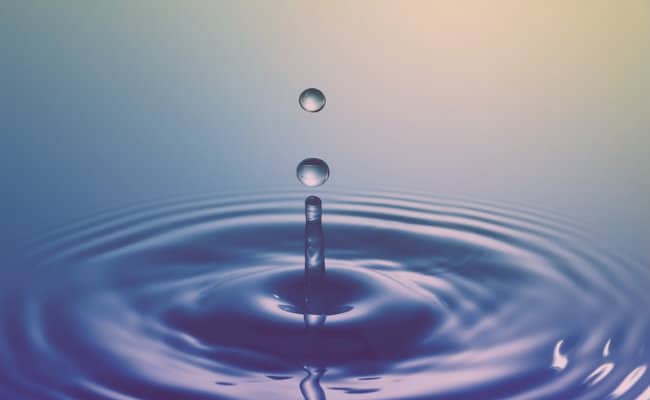This environmental process is affected by air pollution, it is the displacement of hydrogen around the earth. This chemical element is the most abundant in the universe and in the entire earth, comprising 84% of it.
On our planet, we can find it in the water and air we breathe. By virtue of this fact, we must emphasize the preservation of the natural components that modify it. Research on the hydrogen cycle can be of great help to start with the awareness of global society.
Phases of the hydrogen cycle

Hydrogen atoms can be represented as liquid or gas. Nature stores hydrogen in liquid form as it takes up less space than its natural, gas-dense condition.
The water cycle and the hydrogen cycle go hand in hand for the flowering and feeding of plants or in their well-known photosynthesis process.
On the other hand, the organic decomposition that soils have contains high levels of hydrogen that are released back into the air.
Evaporation
El hydrological cycle and hydrogen cycle they are deeply related, since the hydrological cycle must be in the final process for hydrogen to fulfill its function. Evaporation from the surface of the water is the beginning of everything.
Condensation
The atmosphere condenses water from evaporates through the hydrological cycle and changes to liquid to gaseous states. The ocean, glaciers, groundwater, precipitation, sublimation, filtration, and surface flow carry water that will be condensed by the atmosphere.
Perspiration
A clear example of this process occurs when plants absorb water through their roots to pump it to the rest of their body and supply the necessary nutrients and hydrogenation. After this, the water is eliminated from the plants through their pores to be transmitted to the atmosphere. Perspiration represents 10% of the water that evaporates in the world.
Precipitation
It is produced by the cooling of the water droplets contained in the atmosphere, which precipitate due to the weight and size they reach.
Solidification
It happens when the evaporation of water or water droplets contained within the atmosphere solidify due to the change in temperature and produce hail or snow. After this, the fusion occurs, which is when the snow solidifies.
Infiltration
It is when the water returns to the soil and sneaks into it to belong to the plants and their roots again.
Runoff
It is the term used to refer to the act of spreading water on the ground.
Underground circulation
It happens when the water has penetrated the soils and reaches rivers, lakes and seas again.
Why is hydrogen necessary on earth?
It is vital for human survival due to different factors, for example, plants provide other living beings with all the nutrients necessary for their development, the herbivorous animal receives hydrogen from the plant in the form of carbohydrate, this in turn it becomes the body's main source of energy.
Also the processes of life in general are related to hydrogen, since most living beings are composed of nitrogen, hydrogen and oxygen atoms.

How does hydrogen get to our body?
It is represented in the food and beverages we consume, the human body is made up of 70% water and the consumption of hydrogen helps to maintain the body's pH.
To maintain a diet rich in hydrogen we must consume citrus fruits such as tangerines, oranges, lemons, strawberries and of course in the water we drink.
What are the dangers and preventions?
Despite being fundamental to the existence of human beings, hydrogen is highly flammable.
For the person who suffers from respiratory failure, it can be fatal to inhale large amounts of hydrogen, since this reduces the amount of oxygen in the body and produces a state of intoxication throughout the body.
Therefore, it is advisable to have an exact measurement of the amounts of this gas in the environment to avoid these risks. On the other hand, it is necessary to stay away from industrial areas that implement large amounts of hydrogen in the manufacture of certain products since it can cause explosions if adequate safety measures are not taken.
To ensure the protection of the environment, it is necessary to intervene in the educational system of countries with a lower development index. Implementing strategies for coexistence of the individual with natural processes will make him become much more aware of his environment, and of the importance of preserving it. Thus, human beings may be able to maintain the environment in which future generations will grow up in good condition.
But what should I do so that the natural cycles such as hydrogen are met perfectly? Well, you can start by investigating in depth what are the habits that you should implement in everyday life and what are the communication strategies that are best adapted to your abilities so that you can take the message of conscience to third parties.
If you are a father or mother, you can start by offering your children a full upbringing with positive values that are in full coexistence with natural processes and cycles.